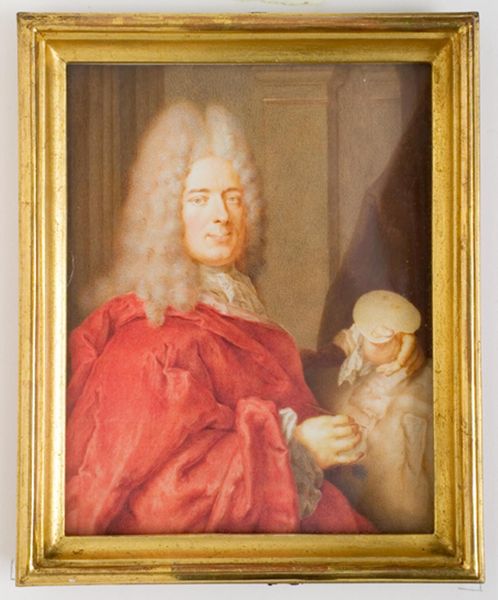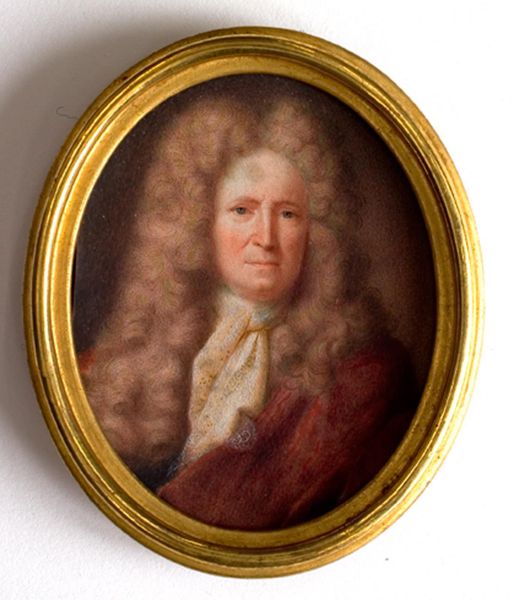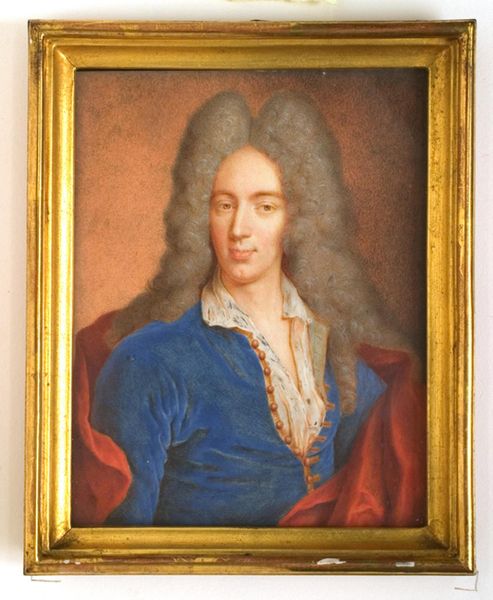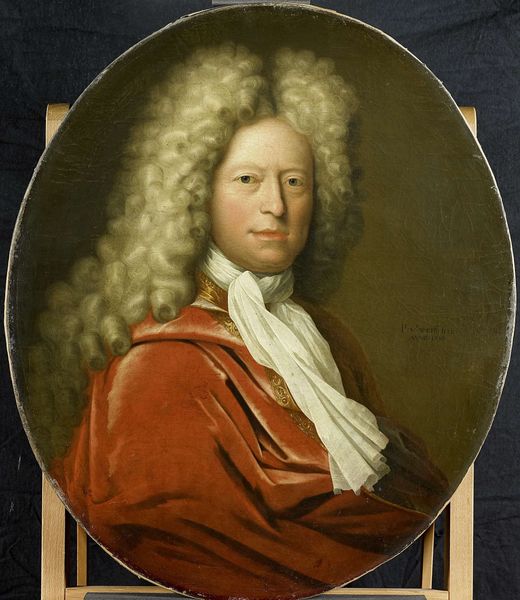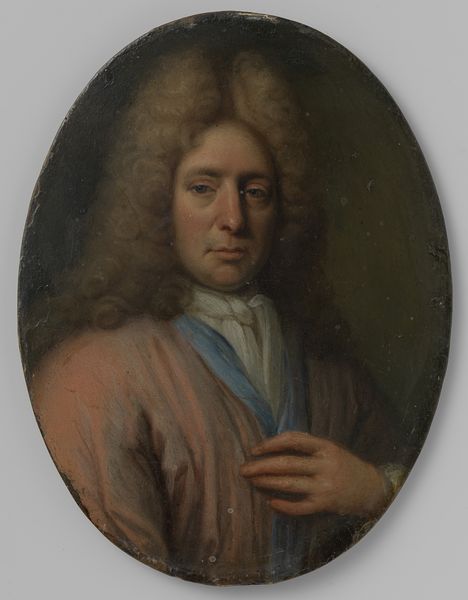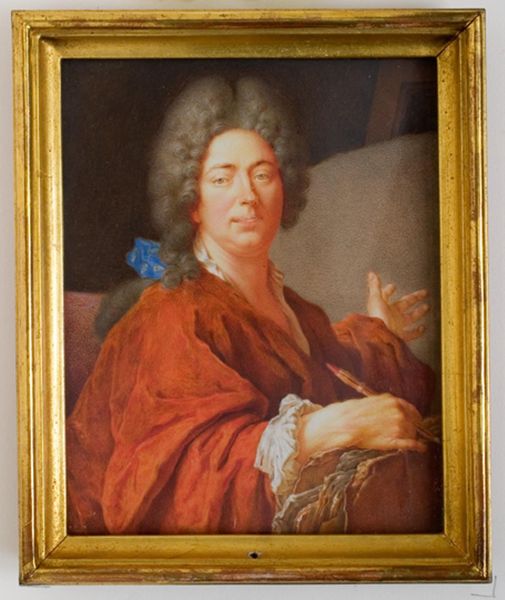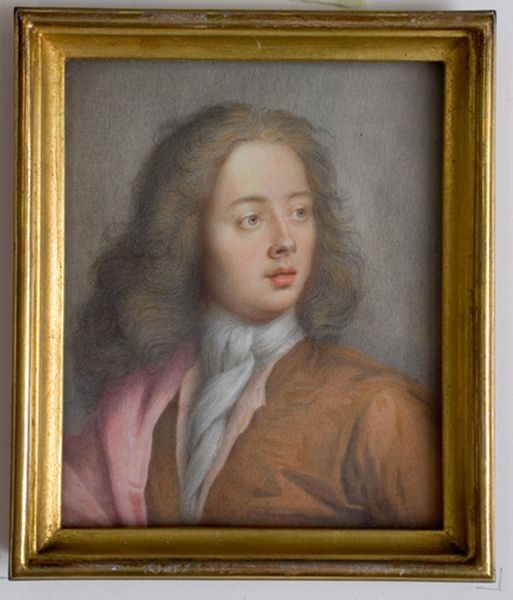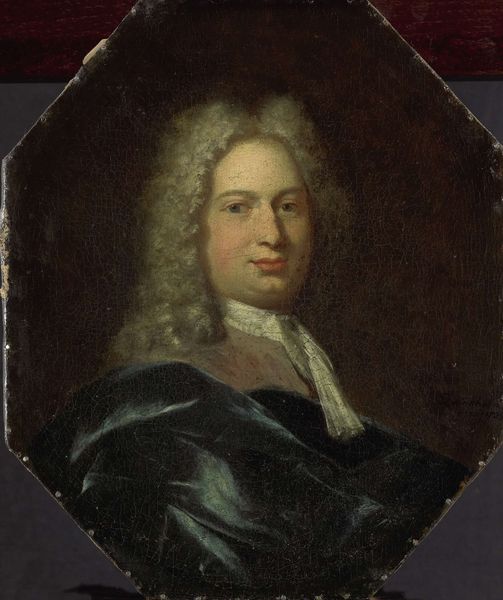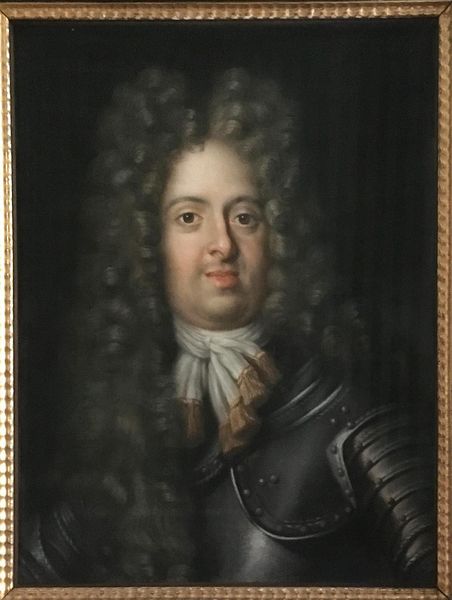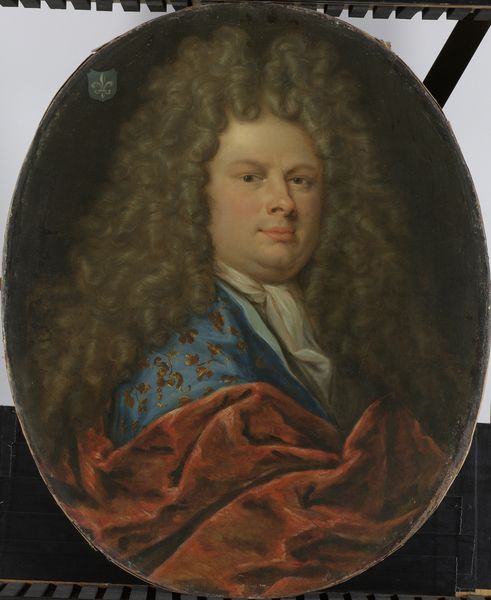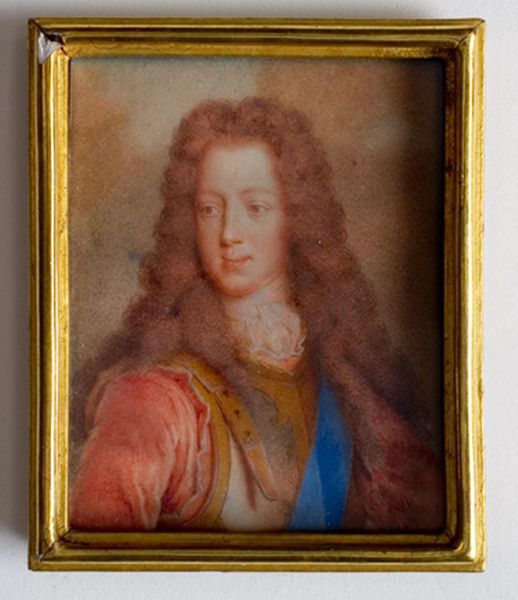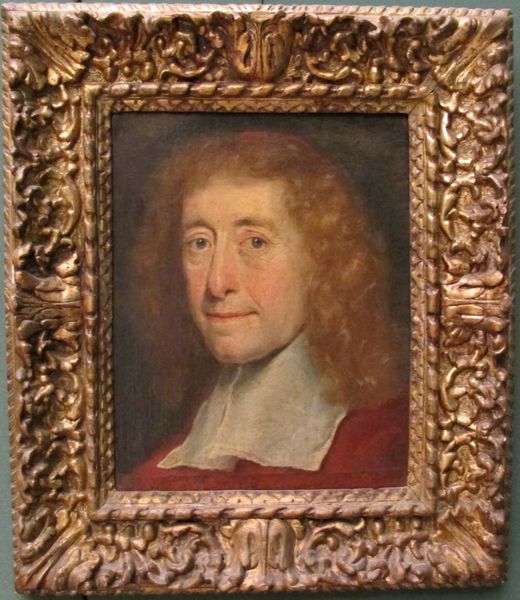
painting, oil-paint
#
portrait
#
baroque
#
painting
#
oil-paint
#
oil painting
#
genre-painting
#
history-painting
#
academic-art
#
rococo
Dimensions: 12.2 cm (height) x 9.4 cm (width) (Netto)
Curator: Before us hangs a striking "Mandsportræt," an oil painting created sometime between 1726 and 1748. It's currently part of the collection here at the SMK, Statens Museum for Kunst. Editor: My first thought? Power. It oozes…well, refined power. It’s that wig, isn't it? Like a lion's mane declaring, "I have arrived, tremble peasants!" Though the gentle smile complicates it, doesn't it? Curator: Indeed. The composition certainly lends itself to that interpretation. The subject is positioned centrally, with the extravagant wig acting almost as a framing device for the face. This creates a clear visual hierarchy, emphasizing the individual's status and importance. Editor: You know, I almost feel bad for the guy under all that hair. Imagine the itching! Still, it does speak to the artist's skill. The detail in the curls, the way the light catches…It’s practically begging you to run your fingers through it. Although I wouldn't advise it. Curator: The materiality itself is significant. The use of oil paint allows for rich, deep colours, especially noticeable in the purple robe, signifying luxury and authority. Note also the subtle brushstrokes; the artist displays academic technique to enhance the portrait's realism while idealizing his subject. Editor: Absolutely! It is so well executed. But I think that this technique can feel... clinical. Everything is just a bit too proper, which keeps me from connecting. Maybe that's just the era. Everyone’s playing a part. The pose, the look in his eye... Who *is* this man beneath the paint, I wonder? Curator: Such questions regarding the relationship between representation and reality are always pertinent when analyzing portraits, wouldn’t you agree? The genre invites precisely these considerations. The brushwork and color serve the precise role of expressing some quality of reality that might never occur with just objective reproduction. Editor: Well said. Now that you mention it, I’m reminded of Oscar Wilde’s quip about life imitating art. Perhaps our bewigged gentleman sought to *become* the ideal depicted on the canvas? We can only speculate on how much he did the original painting justice. What do you think, sir? Did it flatter him? Curator: In conclusion, “Mandsportræt” exemplifies the technical skill and visual language employed during this era, raising intriguing questions about status, identity, and representation in art. Editor: A glimpse into a world of powdered wigs, silent power, and a slight yearning to know what lies beneath. Food for thought, and beautiful brushstrokes, indeed.
Comments
No comments
Be the first to comment and join the conversation on the ultimate creative platform.


